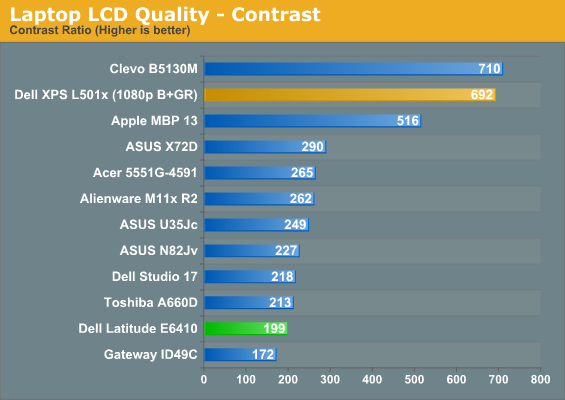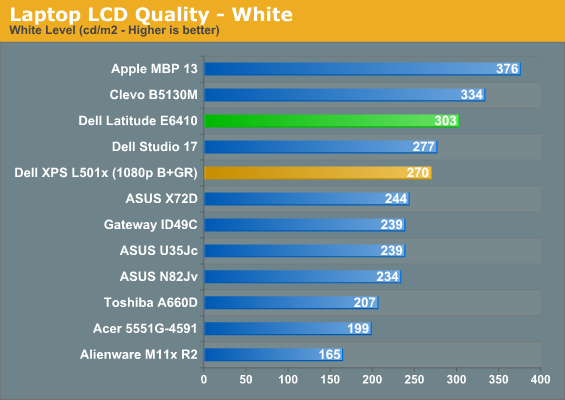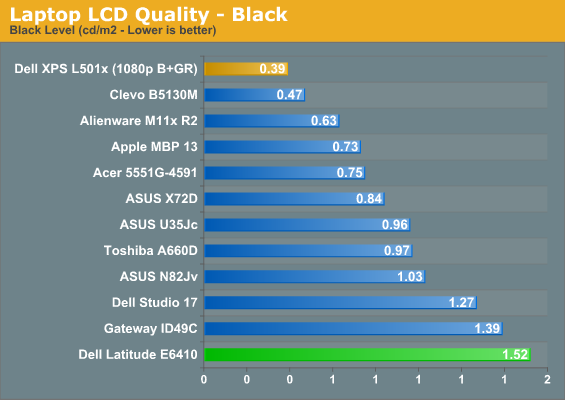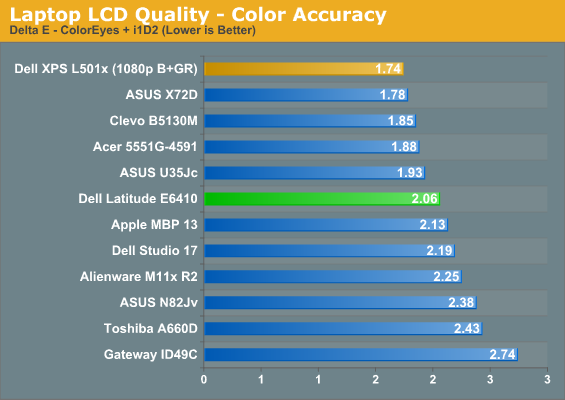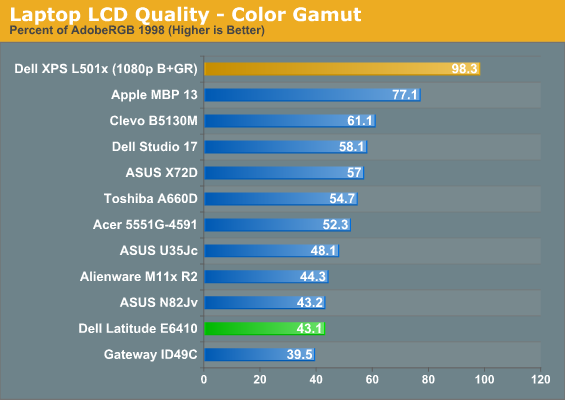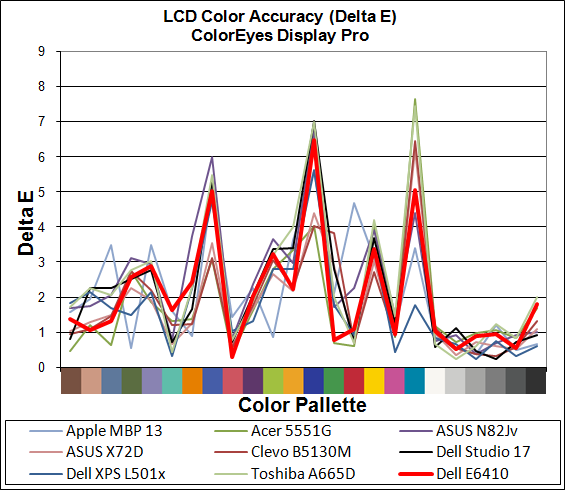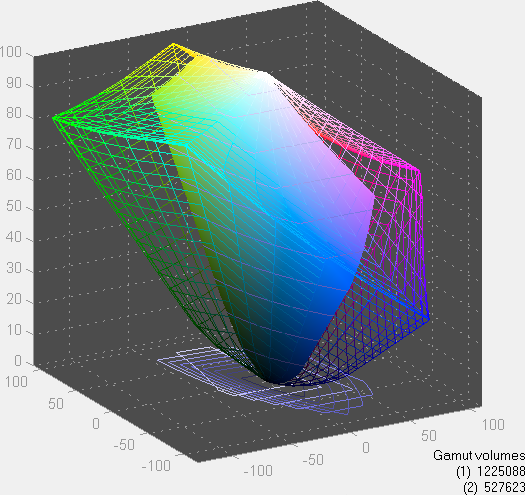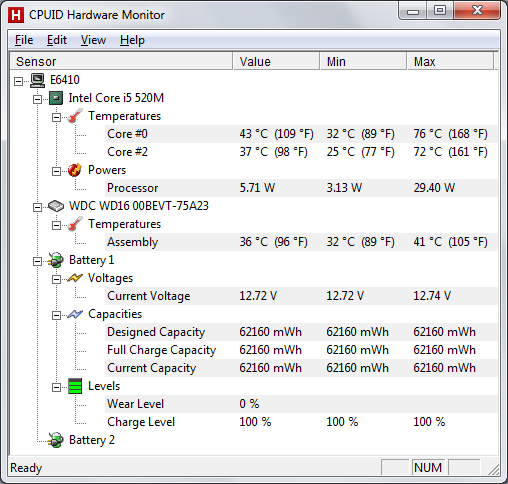|
TopNax |

|
LCD: Matte but Mediocre Back to a look specifically at the E6410, here's how the LCD panel rates. We like the resolution, we like the maximum brightness, but the contrast rates near the bottom of our charts and as a result the colors look washed out. Matte doesn't have to be low contrast (i.e. the MacBook Pro 15 has a good matte panel), but apparently high quality LCDs are only needed in mobile workstations, MacBook Pros, and a few select other laptops (including the XPS 15's 1080p panel).
|
|
Temperatures and Noise
There's not a whole lot to say in regards to temperatures and noise. With only integrated graphics, the E6410 doesn't get particularly hot or loud. The CPU temperatures under load reached a maximum of 76C, and noise levels ranged from 30dB at 12" (the limit of my SPL meter) at idle and light loads to as much as 34dB with a maximum load on the CPU and GPU. In other words, if you were to use the E6410 in a meeting, your typing would be far more obnoxious than the noise from the fan. |
|
Conclusion: One Year Later, Arrandale Still Looks Good Dell didn't send us this laptop, and it may not be their best foot forward. That's not to say that the E6410 is a bad laptop, but like the ThinkPad T-series there's a price premium for the build quality and reliability. During the past month or so of using the E6410 as my primary work/travel laptop, I've been quite happy with it. It's not too heavy, plenty fast, and gets good battery life. I also appreciate the move back to an old-style 16:10 aspect ratio, though I still prefer the 1080p LCD in the Studio XPS 16 over WXGA+. I had no issues with crashing or stability, and about the only real complaints are the lack of a "context key" on the keyboard and performance that just didn't feel quite as snappy as the new XPS 15. I'm not certain whether it's the small 160GB HDD in the test system, or if it's the lack of a faster discrete GPU, or if it's something else, but for performance the XPS 15 still wins out in my book. Aesthetically, though, I'd take the Latitude design (E6410 or E6510) over the rounded XPS chassis if given the choice. That takes care of the Dell side of things; what about the Intel aspects? Arrandale showed up at the beginning of 2010, and nearly a year later it's still going strong. In many ways, I'm amazed at the fact that Intel is about to replace Arrandale with something "better", but we'll have to wait a bit longer to see exactly how Sandy Bridge laptops stack up to the Arrandale competition. When Clarksfield arrived last September, we got substantially faster mobile processors but also worse battery life. If Sandy Bridge can at least deliver Clarksfield performance and Arrandale power characteristics, it will be a success. We might finally have the ability to get our quad-core mobile cake without the need to pack a power brick everywhere we go. Or we might not. Intel's current Calpella (Arrandale CPUs) platform delivers good application performance, very good to excellent battery life, but generally poor (but adequate for anything outside of gaming) graphics capabilities. Sandy Bridge looks set to improve the CPU performance by a decent amount (~20% with the same number of cores at the same clock speed), and potentially more than double the GPU performance. The one remaining question is what Sandy Bridge will do for laptops and in particular, how it will affect battery life. Intel has been good since the Core 2 launch with keeping power requirements relatively constant, but there's certainly wiggle room if they can justify the performance increase. The Intel design philosophy is that every 1% increase in power requirements must come with at least a 2% increase in overall performance, so if Sandy Bridge ends up 50% faster we might see battery life drop, or we might see 10-20% more performance with the same battery life. Arrandale ULV was more like the former, with much better performance than CULV but clearly higher platform power requirements (i.e. the M11x R2 gets less battery life in every case compared to the original M11x). Where will Sandy Bridge fall? We're hoping battery life at least stays static, and ideally we'd like to see improvements—and not just when comparing quad-core Sandy Bridge to quad-core Clarksfield! Now that we've got a final look at Arrandale in our charts, we're ready for Sandy Bridge to show up. We even know all the mobile Sandy Bridge names. It's a bit concerning that none of the parts have a TDP lower than 35W, but then all the current Core 2010 also list 35W TDP. If nothing else, at least we'll finally get the chance to see Intel quad-core laptops paired up with GPU switching technologies like NVIDIA's Optimus, so the next generation of gaming laptops could finally break into the 3+ hour range without using 95Wh batteries. And of course, we're still waiting to see the next generation of AMD mobile platforms. So mark your calendars, because early 2011 looks set to shake up the mobile market once again and make things interesting. |
|
Home Previous AMD page Intel page Next |
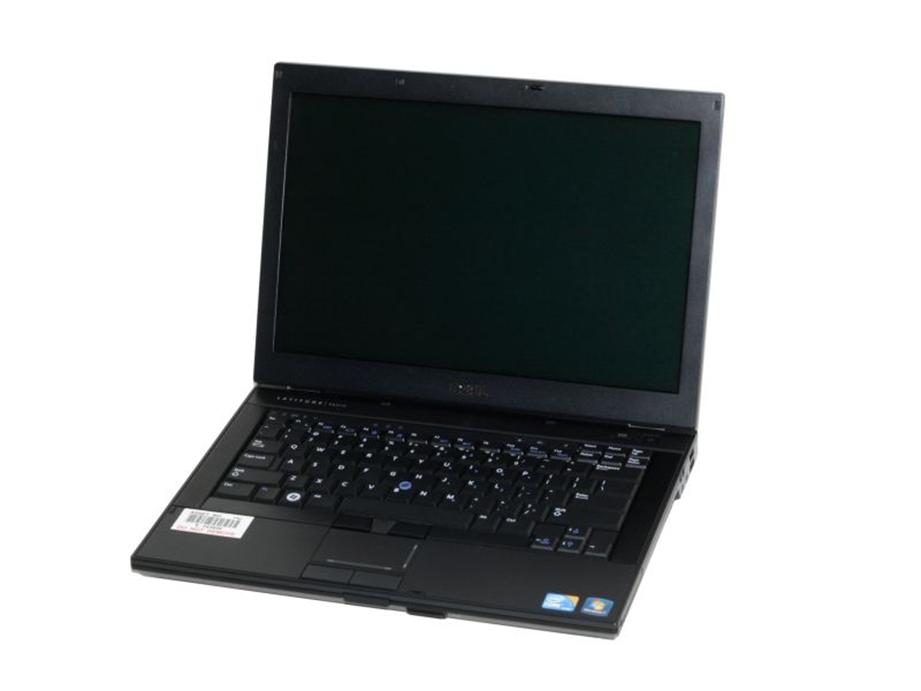
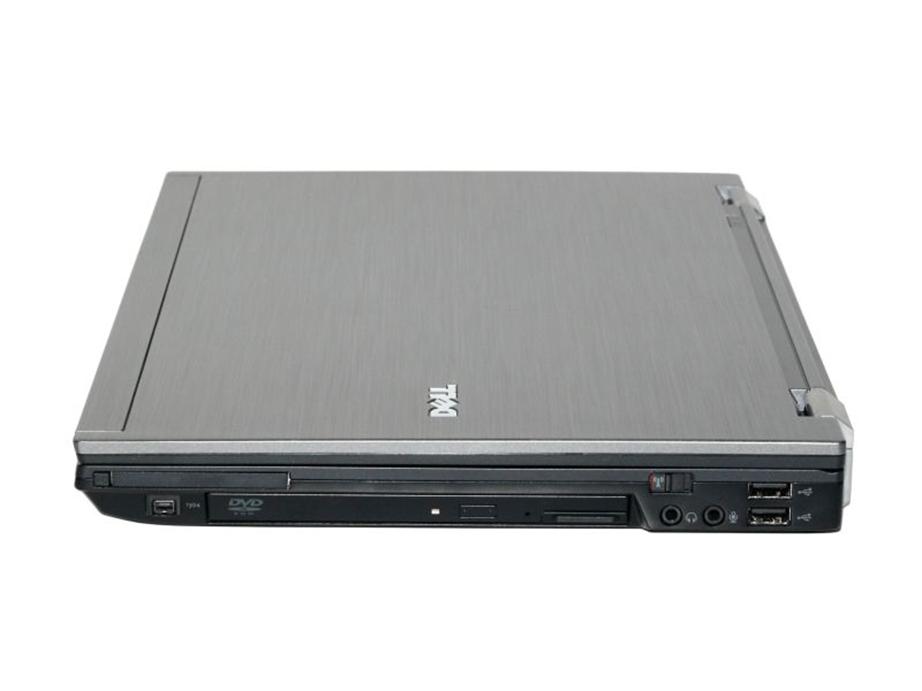
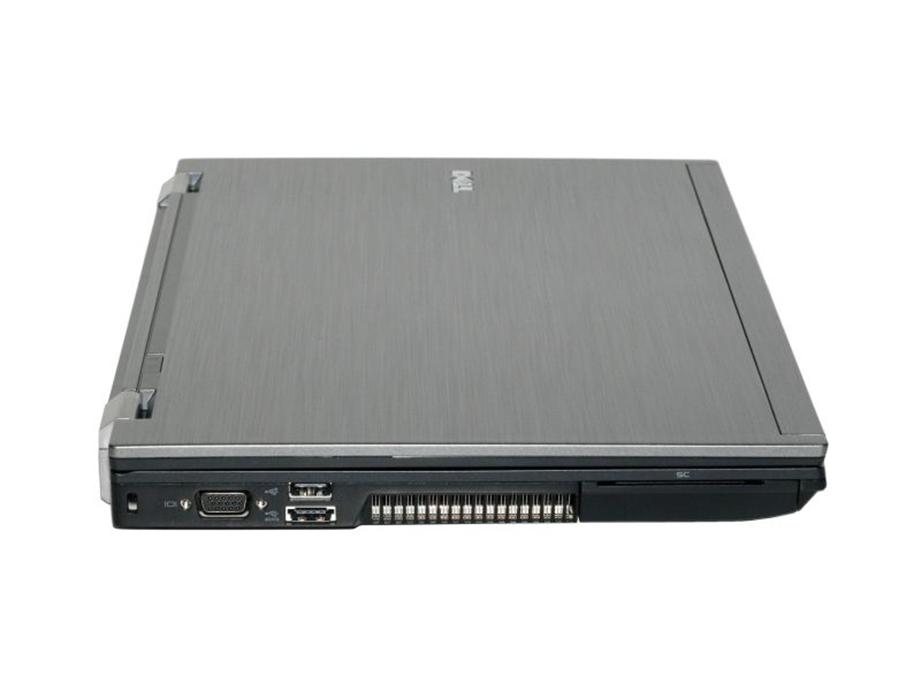
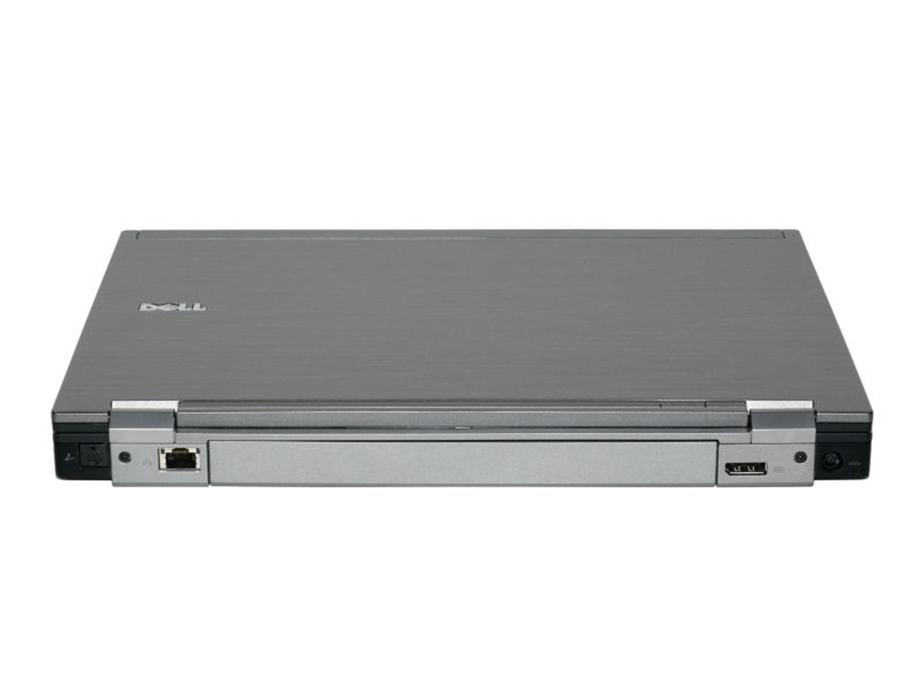
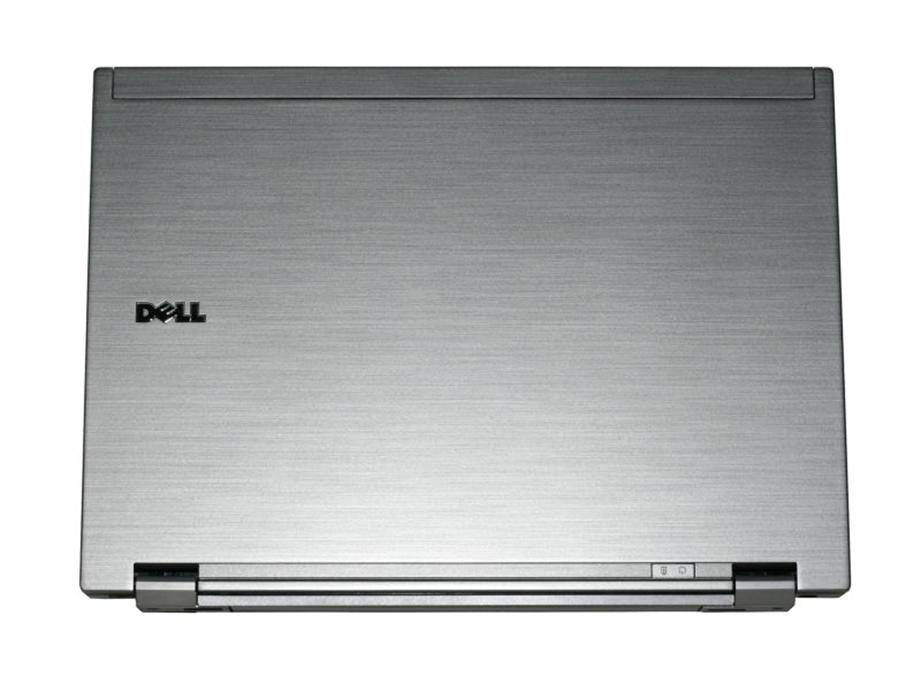
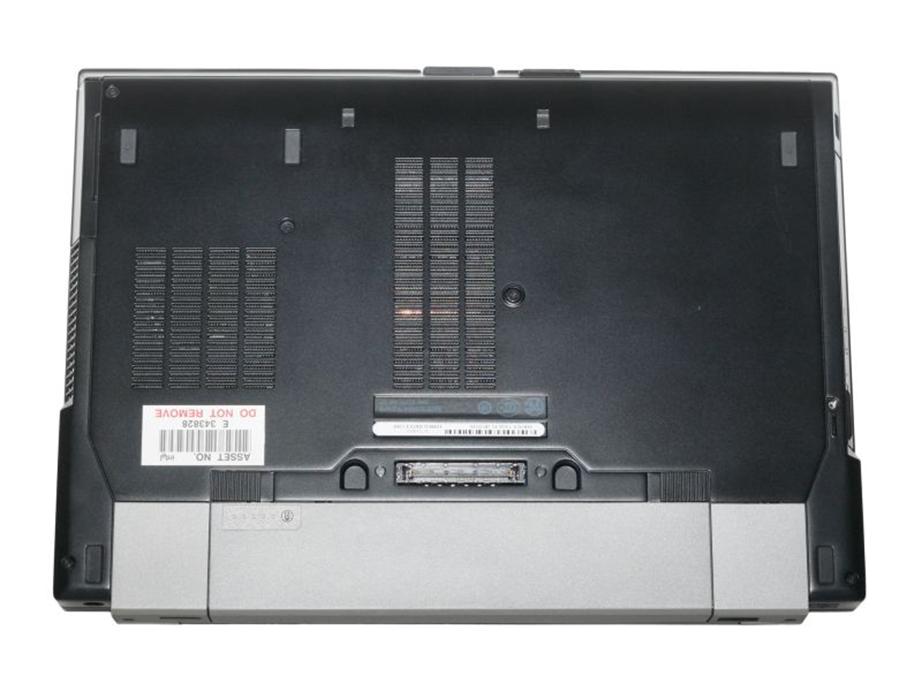
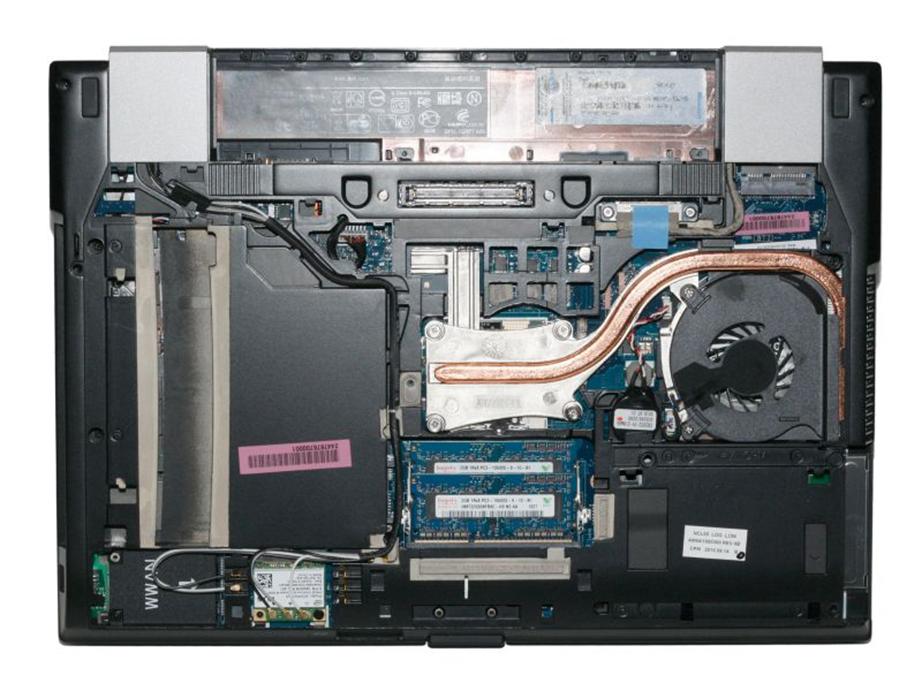
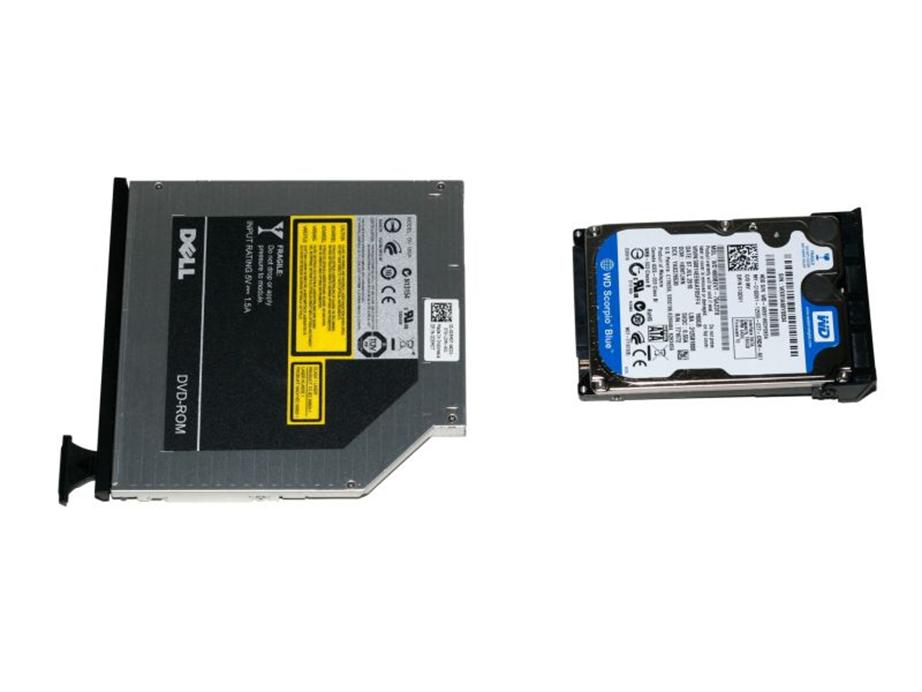
|
Home Previous AMD page Intel page Next |
